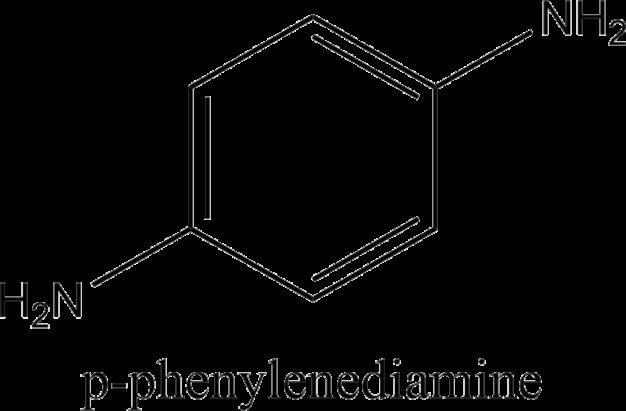
You get your hair colored regularly, but it’s almost Christmas time and you need to cut back on certain costs. So you head to your nearest grocery store to get a box hair dye and do your own touch-ups at home. Your goal is “healthy hair color,” so you know for sure you want to go with the ammonia-free, PPD-free color.
What is PPD and is it really toxic?
Para–Phenylenediamine (PPD”> is a chemical found in permanent hair dye. According to DermNet NZ, PPD may also be found in “textile or fur dyes, dark colored cosmetics, temporary tattoos, photographic developer and lithography plates, photocopying and printing inks, black rubber, oils, greases and gasoline.” It is used in permanent hair color because it has long lasting results. PPD allows hair dye to remain in the hair without being shampooed out. PPD allows one to wear a perm to achieve waves or curls without the hair color being faded. It is also known to create natural-looking color on the hair.
Para–Phenylenediamine (PPD”> is a chemical found in permanent hair dye.
Allergic and autoimmune reactions from PPD
Contact dermatitis is defined as ‘an allergic reaction to something that you touched.’ Reactions to PPD are typically mild and include red, itchy swollen eyelids or ears, or inflamed and swollen skin and scalp. An allergic reaction to PPD can also occur all over the body, and in severe cases cause contact urticaria and although not very common, anaphylaxis. According to DermNet NZ “contact urticaria reactions appear within minutes to about one hour after exposure of the offending substance to the skin.”
You may not get an allergic reaction to PPD the first time you color your hair; it can happen after using a hair dye several times.
An allergic reaction to PPD could in rare cases trigger an autoimmune issue like as alopecia areata or psoriasis. One of these skin problems can occur if you have a genetic predisposition. Alopecia areata is defined as an autoimmune disease that causes small, round patches of hair loss. The hair loss can occur on the scalp or anywhere else on the body. Psoriasis is another autoimmune problem of the skin and results when the skin cells on the body or scalp shed at an abnormal speed causing silvery gray patches to develop on the skin, or scalp. These patches tend to flake, itch, burn and feel dry.
Other common names for PPD
Be aware of permanent hair color companies calling their dye “PPD-free”. It is important to read labels! These are common alternative names for PPD:
- PPDA
- Phenylenediamine base
- p-Phenylenediamine
- 4–Phenylenediamine
- 1,4 Phenylenediamine
- 4-Benzenediamine
- 1,4-Benzenediamine
- para-Aminoaniline
- Orsin™
- Rodol™
- Ursol™
Northwestern Medical Center of Chicago says “finding alternative hair dyes for individuals allergic to para-phenylenediamine (PPD”> has been difficult. Newer permanent and demi permanent hair dyes that have replaced PPD with para-toluenediamine sulfate (PTDS”> are now available.”
People who are not able to tolerate PPD in permanent hair color may be able to tolerate PTDS instead. PTDS is a substitute of PPD so there is still a possibility that you may have a reaction to PTDS.Can you find PPD-free hair color?
Clairol Professional Beautiful Collection Semi-permanent Advanced Gray Solution will help blend in gray hair, and is safe for the skin because it contains no peroxide, ammonia or PPD. Because this product is semi-permanent rise the color fades after each shampoo.You can ask your stylist about new Koleston Perfect Innosense. This permanent hair color was designed for people who are sensitive to chemicals such as PPD and PTD in permanent hair color. Koleston Perfect Innosense is a permanent hair color that is formulated with new ME+ molecules. ME+ molecules reduce the risk of an allergic reaction and trap pigment into the hair so that you get long lasting, permanent hair color results. Koleston Perfect Innosense does not contain PPD or PTD.
How do I know if I’m allergic?
The only way to know if you are allergic to PPD is to have a permanent hair color applied to your hair. Many permanent hair color companies, like Wella, encourage a 48-hour Skin Patch Test prior to permanent color service. A negative skin patch test does not rule out an allergic reaction to PPD or any other ingredient in hair dye. Wella.com states that even though its hair color is PPD-free and PTD-free, there remains a risk of allergic reaction that can be severe. If you have ever experienced an allergic reaction to any hair colorant ingredient, including PPD and PTD, you should not color.

